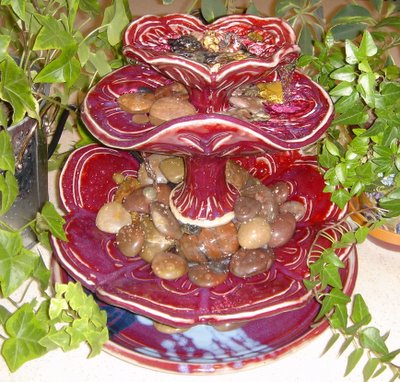Upcoming Events for Art Pottery Enthusiasts
If you’re going to be in the Philadelphia, PA area anytime during April, be sure to visit the “Potters Council 2010 Exhibition: FILL-adelphia”. For more information, visit ceramicsartsdaily.org/potters-council.
One of the biggest art pottery events of the year will be the American Art Pottery Association Convention, Show and Auction held April 21-25 in Cleveland, Ohio. You can find out more at aapa.info.
On May 8, the Annual Cowan Pottery Symposium is being held in Rocky River, OH. Visit cowanpottery.org or rrpl.org for more information on this upcoming symposium.
Right in the heart of American art pottery country, The Zanesville Museum of Art will show an exhibition of Ohio ceramics beginning May 8 and will run through August 7. The event, “Deco” is a must see if you’re in the area over the summer.
Columbia, SC is home to the “Innovation and Change: Great Ceramics from the Ceramic Research Center, Arizona State University Collection” traveling exhibition slated for May 27 through September 5. It’s being held at the Columbia Museum of Art and more information can be found at columbiamuseum.org.
Are you a fan of stoneware? Check out the Brandywine River Museum’s exhibition of “Crocks, Jugs, and Jars: Decorated American Stoneware” between May 29 and July 18 in Chadds Ford, PA.
The North Dakota Pottery Collectors Society in Grand Forks, ND is hosting a convention June 11, 12 and 13 titled “Celebrating 100 Years of U.N.D.”. If you’re interested, visit ndpcs.org.
“The Scarab Vase - Celebrating 100 Years” is an exhibition that can be seen at the Everson Museum  of Art in Syracuse, NY between June 12 and August 29. Everson.org has all the details.
of Art in Syracuse, NY between June 12 and August 29. Everson.org has all the details.
Finally, another Zanesville, OH event, “Pottery Lovers Reunion” can be seen beginning July 8 and July 11. This is another must-see for pottery lovers everywhere. Visit potterylovers.org for the specifics.
Have anything else to contribute to the list? Drop us a line and we’ll do our best to get it posted. Finally, don't forget to visit our site for all the latest additions and browse our bargain bin, too



